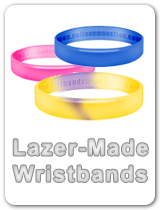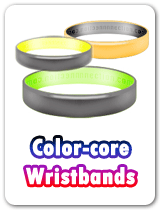The Late 1800s. European researchers used an earlier discovered gas called vinyl chloride in a mixture, creating what they considered to be a useless rigid material. Although this material was examined by other scientists, none could find a commercial use for it.
The 1920s . In 1926, Dr. Waldo Semon, a researcher at The BFGoodrich Company in Akron, Ohio, was attempting to find an adhesive that would bond rubber to metal. He began experimenting with the discarded material by combining it with other chemicals and exposing it to heat. The result was plasticized polyvinyl chloride - which we now call PVC or vinyl - a flexible "gel" that had striking similarities to natural rubber.
Throughout the late 1920s, Semon continued to experiment with this new material, but BFGoodrich had a difficult time marketing it.
The 1930s . Vinyl (PVC or polyvinyl chloride) remained a laboratory curiosity until its first commercial use - shock absorber seals - opened the eyes of industry to other potential applications that might reduce the country's dependence on limited rubber resources. Of note, flexible vinyl was used to develop the first American synthetic tires, which we have on our cars today.
These early successes led to further experimentation with vinyl formulations. Vinyl plastisol, a solution of vinyl resin in plasticizer, was first used as a coating to make waterproof fabric for a number of products. Today, vinyl-coated fabrics are used to make everything from durable, lightweight inflatable rafts to easy-to-clean, attractive wallcovering.
The 1940s . Vinyl played a significant role for the armed forces during World War II, addressing severe shortages of natural rubber. As a result of its superior safety and performance as a nonflammable electrical wire coating, vinyl has remained the standard material for wire insulation.
The 1950s . Vinyl's capabilities continued to diversify, as new formulations further expanded the material's physical properties and opened new markets. The most important innovation came when irrigation pipe made from rigid vinyl was introduced to the United States. Now the largest market for vinyl production, PVC pipe is recognized as a less expensive, non-corrosive and more easily installed alternative to metal pipe.
Today and Tomorrow . Since Dr. Semon's accidental discovery more than seven decades ago, vinyl's use has grown and expanded in virtually every industry, but most notably in the construction industry. Of the more than 30 billion pounds of vinyl produced worldwide today, about 60 percent is used in the construction industry. Industry projections indicate that this growth will continue well into the future, especially to meet the infrastructure needs of a growing global population. Today, the most widely used building product is vinyl.
Uses of Vinyl: The durable and low-maintenance quality of vinyl makes it a popular material in home siding, flooring and wallcovering. The fire resistant nature of vinyl helps insulate electrical wires and meets the stringent requirements of regulated safety standards.Vinyl is widely used in health care. From blood bags to IV bags and tubing, vinyl medical products have long helped save lives.
Vinyl's versatility is illustrated in its use as a packaging material. In a rigid state it protects goods ranging from electronics to medicine; and in a flexible form it keeps food fresh in the grocery store.
When you add its use in the toy and automotive industry, you realize vinyl does have infinite uses.



